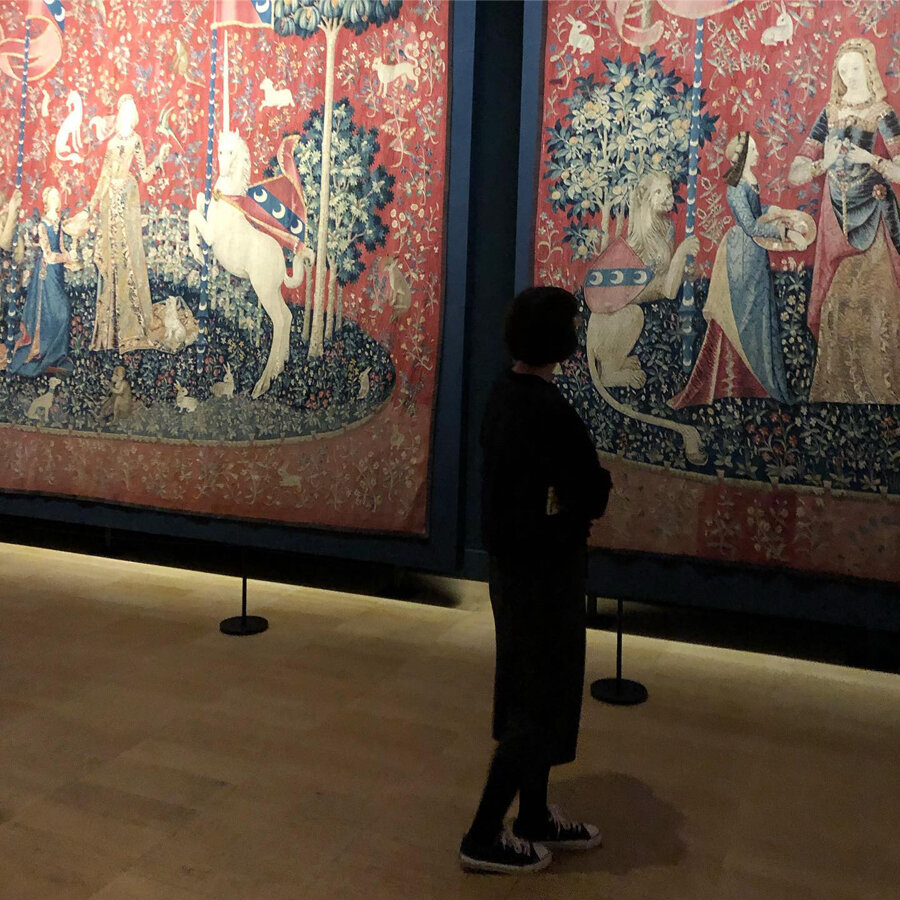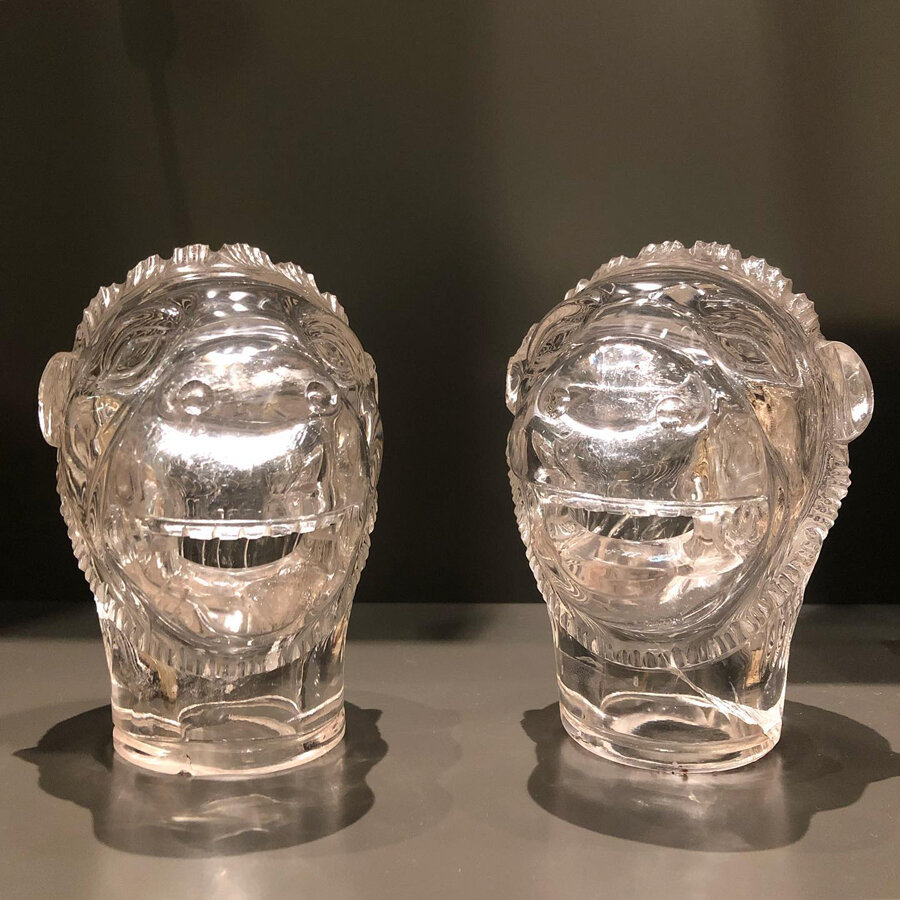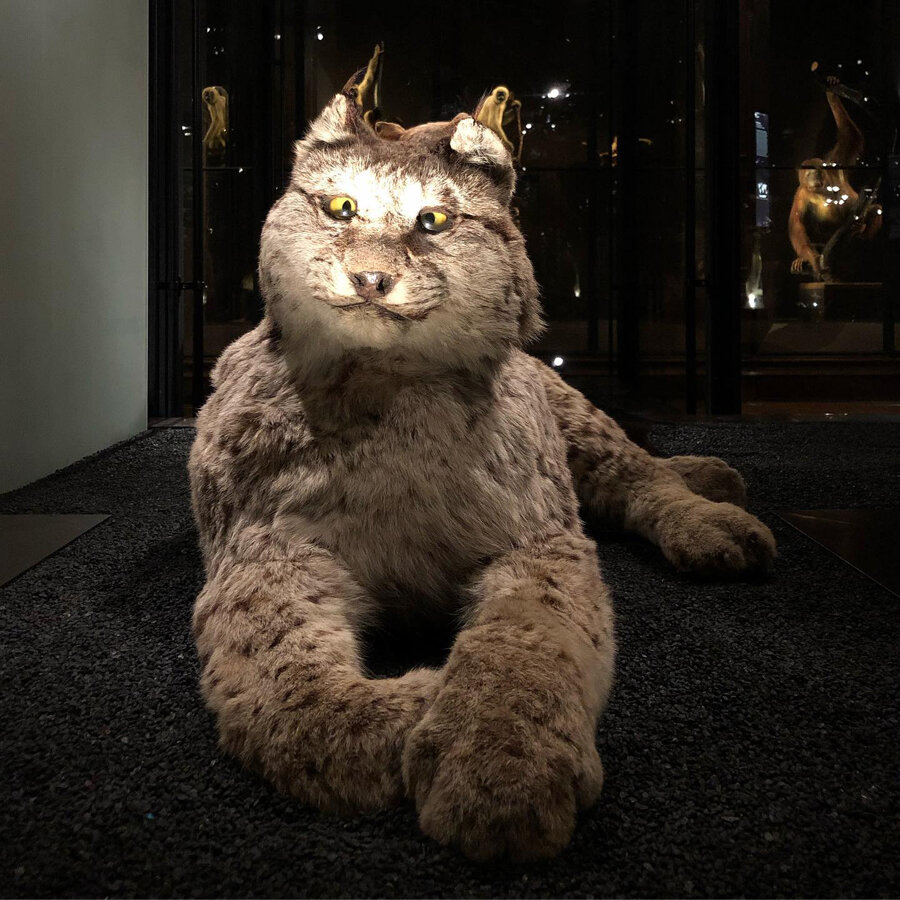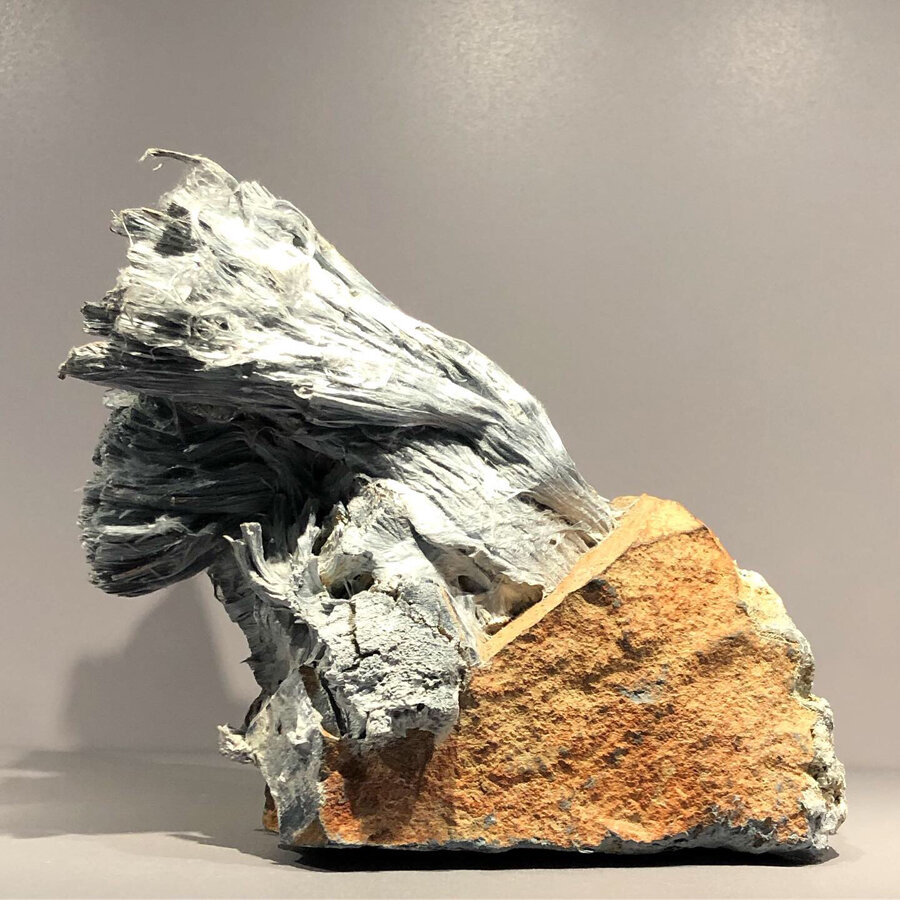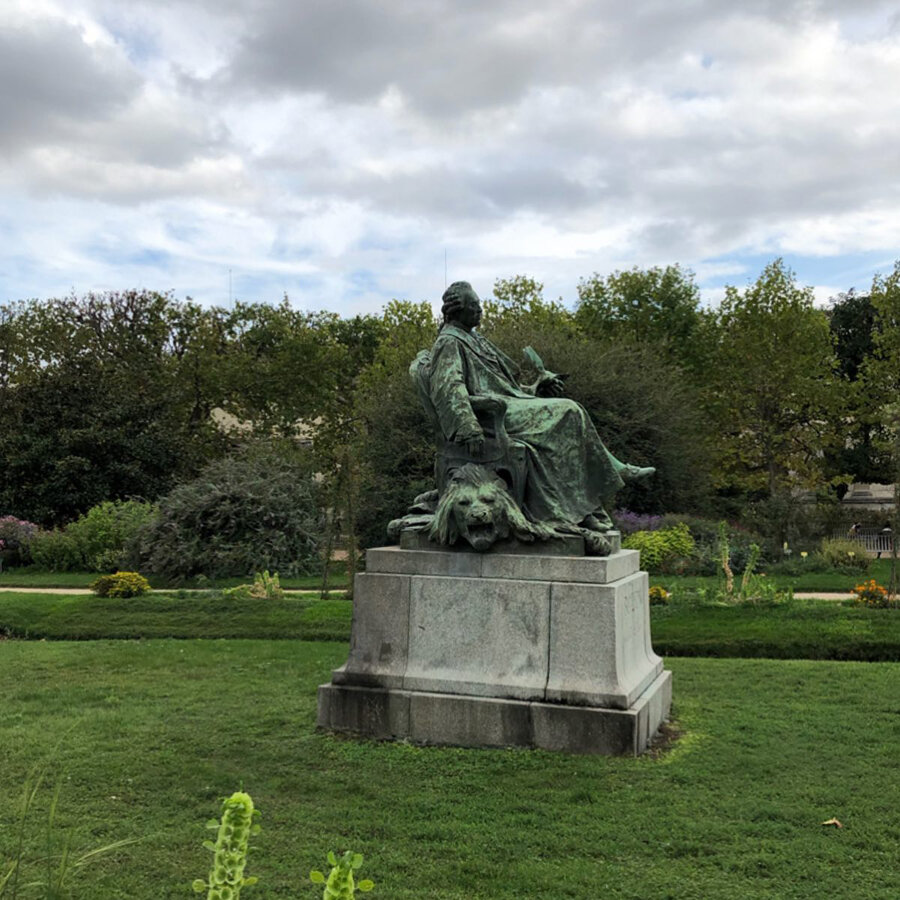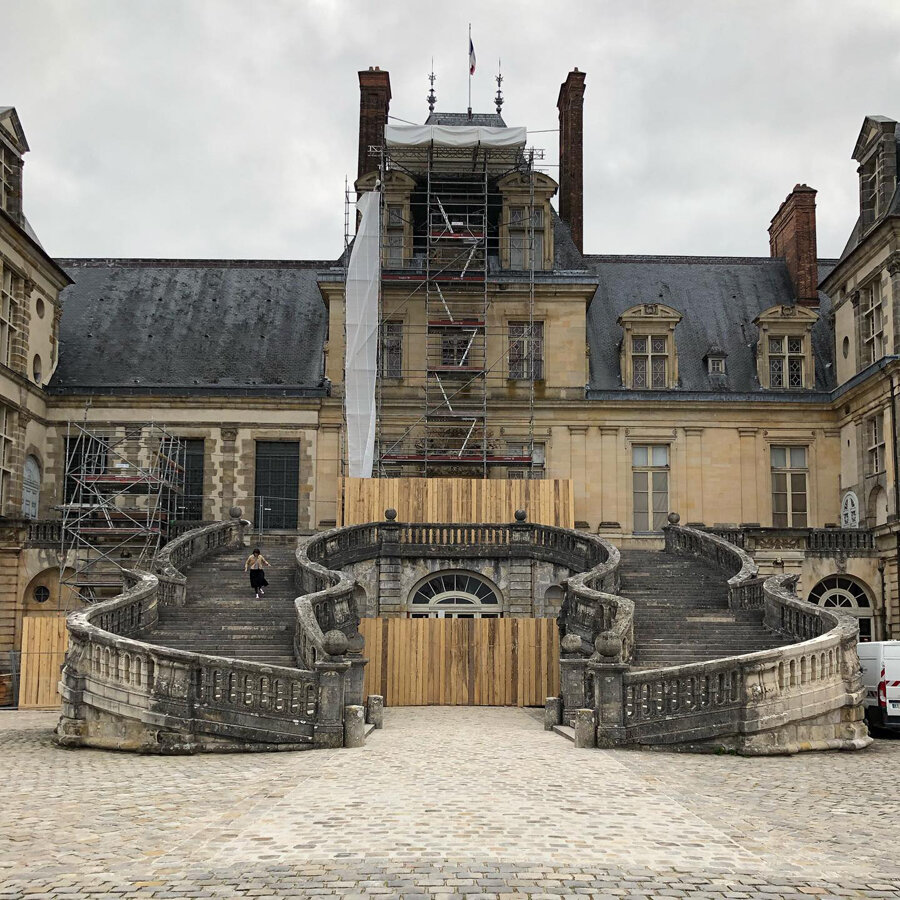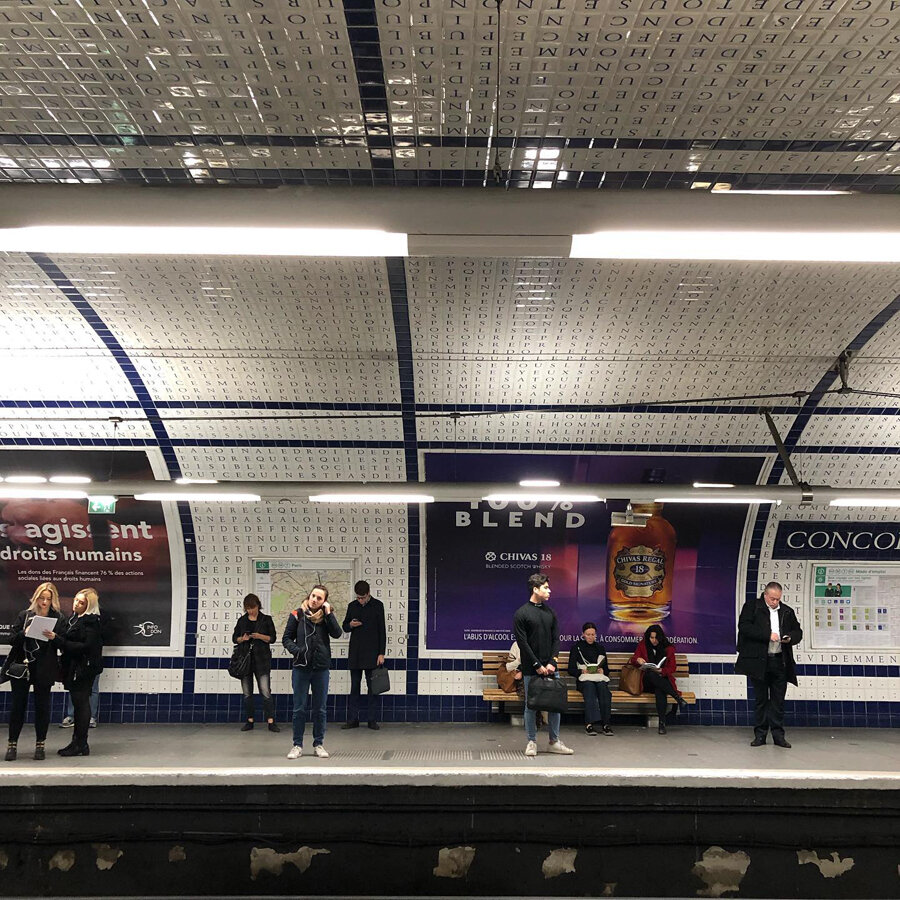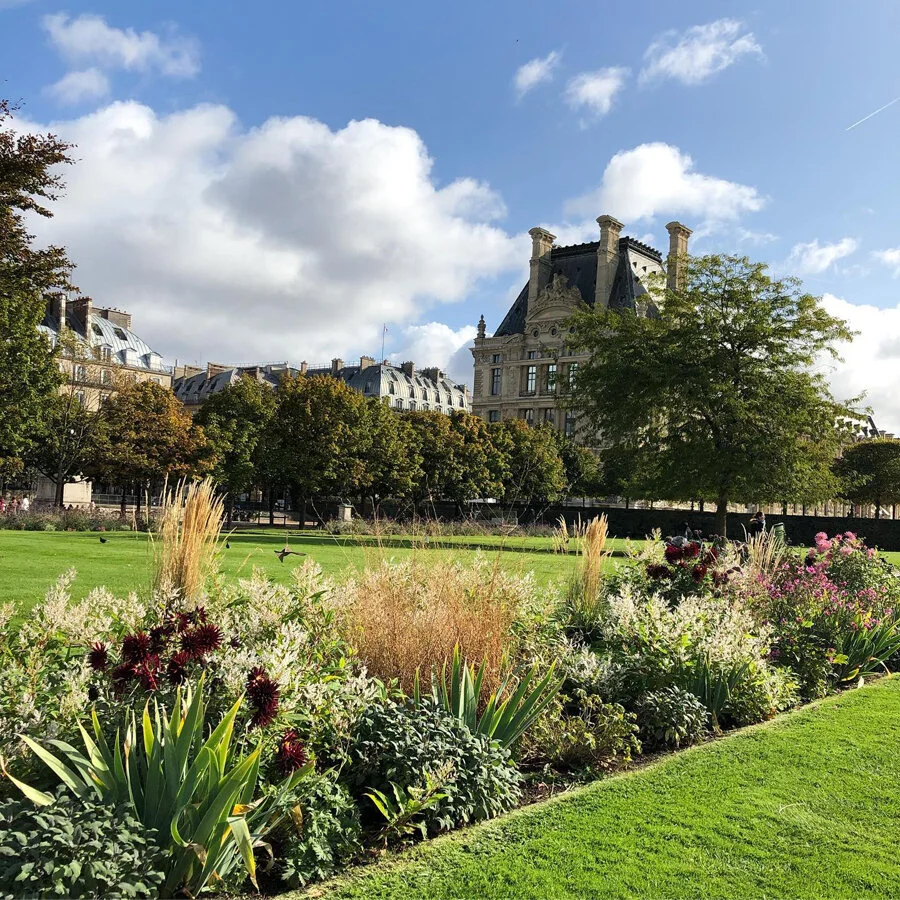“But first of all take a step back and look at them, all together. Are they not tranquil?”

Paris, rewound
September – October 2019
10th October:
George Sand (1804–1876) and The Lady and the Unicorn
Journal d’un voyager pendant la guerre
Boussac, 3 October 1870
“My little room, so comfortable in appearance is, like the others, full of cracks .... The drawing room is there, at the end of a small dark corridor .... The great fire that was lit in the evening still burns bright. I take advantage of its light to take a leisurely look at the three 15th-century tapestry panels .... the unicorn was there, not ‘passant’ or ‘rampant’ like some element of heraldry, but on an equal footing with — almost giving its hoof to — a richly and strangely dressed slim lady, who is escorted by a very young girl as flat-chested and slender as her mistress. This thin blond lady is very mysterious, and looked, at first, to my little girl yesterday, like a fairy. Her varied outfits are in a strange taste, and I do not know if they were fashionable at the time or a fancy of the artist. I notice an upright aigrette [plume] that is simply a bunch of hair gathered in a ribbon, like a paintbrush planted full in the forehead. If we were still under the empire, this novelty should be proposed to the women of the court, who in the latter years would seek so passionately the most desperate of innovations. Everything is dying away, fanciful clothing as well as other flights of fancy. How could we have missed this skyward brandished ponytail? You have come to Boussac, the tiniest municipality there can be in France, to discover this new way to please.”
* * *
Still, and stilled, at the Musée de Cluny, before a tapestry depicting Hercule et le lion de Némée and lion heads of rock crystal, Rome or Constantinople, circa 500. Floored. Let’s leave it to Rainer Maria Rilke and The Notebooks of Malte Laurids Brigge, to say what we feel (about the unicorn tapestries that merge the secular with the spiritual, and the real with the imaginary):
“There are six tapestries; come let us pass slowly in front of them. But first of all take a step back and look at them, all together. Are they not tranquil? There is little variety in them. See that blue, oval island in all of them, floating over a soft red background, which is filled with flowers and inhabited by small animals busy with their own activities. There only, in the last panel, the island rises a little, as if it has become lighter. There is always a figure, a woman wearing different attires, but it is always the same lady. Sometimes, there is beside her a smaller figure, a maidservant, and there are always heraldic figures: large ones, on the island, which are part of the action. To the left, a lion, and to the right, in light hues, a unicorn; they carry the same banner high above them: three silver moons rising on a blue band on a red field.”
10th October:
In the Grande Galerie de l’Évolution and Salle des Espèces Menacées et Disparues (The Room of Endangered and Extinct Species), in particular, and on day three of the Extinction Rebellion, the weight of it all was felt.
“We are facing an unprecedented global emergency. Life on Earth is in crisis: scientists agree we have entered a period of abrupt climate breakdown, and we are in the midst of a mass extinction of our own making.
Government must act now to halt biodiversity loss and reduce greenhouse gas emissions to net zero by 2025.
There’s plenty of ways to get involved in #InternationalRebellion. If you can’t physically join us you can still show your support by spreading the work on social media or making a donation.
#EverybodyNow before it’s too late!”
— @extinctionrebellion
* * *
We farewell one of two known specimens of the Santa Lucian Giant rice rat; the sole complete black emu skeleton; and only complete mounted Schomburgk’s deer; and a Rodrigues giant tortoise (Atlas Obscura), and enter the stardust and molten rock of La Galerie de Minéralogie, at the Jardin des Plantes, to view a collection older than the building which houses it.
“When it was created, this minerals and gems collection incorporated those specimens that had been assembled since 1626 under the reign of French king Louis XIII in the collections of the Royal Garden of Medicinal Plants. Some specimens of the King’s Cabinet and some of the Crown jewels were also added to this collection. Its historical interest grew further in the 18th century, when modern disciplines of mineralogy and crystallography emerged.
The MNHN collection has continued to grow since its creation, with the aim of sampling the planet’s mineral diversity and showing its possible uses for humanity. This growth is the result of the systematic collecting of mineral species and recording of their geographical origins by the Muséum’s scientists, and through numerous donations: amongst other things, they include a collection of cut gems and crystals, the dream stone collection of Roger Caillois, objects, samples, instruments, manuscripts and historical models of minerals and crystals that belonged to the great scientists of the 18th and 19th centuries, like Romé de l’Isle, Haüy, Des Cloizeaux or Lacroix. The original documents and manuscripts associated with these historic collections are preserved at the Muséum’s Bibliothèque Centrale.
The collection contains some 340 types of mineral species (reference samples of each newly described mineral species).”
— La Galerie de Minéralogie
* * *
Perhaps it was the greenhouse, glowing pink. Perhaps it was the petite stand selling glace à la française named Louise (@louiseglaces). Perhaps it was both, and more. Either way, Louise danced around the Jardin des Plantes, like one of the many birds, in celebration of changeable autumn and beautiful life.
* * *
Perhaps it was the swans, gliding on the lake before they signalled time for take off with an impressive series of honks. Perhaps it was the horseshoe staircase constructed for Louis XIII (1610–43) by Androuet du Cerceau, decorated in construction scaffolding. Perhaps it was both, and more. Either way, earlier in the week, Louise danced around the grounds of the Château de Fontainebleau.
11th October:
8.30am
Jardin des Tuileries
Joggers pass us by, and in the Bassin Octognal, several red umbrellas are submerged in the water as part of installation for the forthcoming International Art Fair.
9.30pm
Pont au Change
The Extinction Rebellion (@extinctionrebellionfrance) grows.
(@extinctionrebellion: “The rebellion is in full swing! Rebels yesterday held streets in Paris, all day and throughout the night. We need #EverybodyNow to join us in a rebellion without borders. If you haven’t been able to join us throughout the day, remember you can still join us in the evenings! If you can’t physically join us on the streets you can still support the rebellion by spreading the word or donating.”)
* * *
In 1909, Claude Monet stated of his Water Lilies (Nymphéas) in the two egg-shaped rooms which draw out the mathematical symbol for infinity, at the Musée de l’Orangerie: “those with nerves exhausted by work would relax [here], following the restful example of those still waters, and to whoever entered it, the room would provide a refuge of peaceful meditation in the middle of a flowering aquarium” (@museeorangerie). And we felt just what he meant.
Image credit: From the mineralogy collection of the Muséum national d’Histoire naturelle (MNHN) which contains around 130,000 specimens. MNHN was created in 1793 based on the royal mineralogy collections, at the same time as the Muséum’s mineralogy chair.






